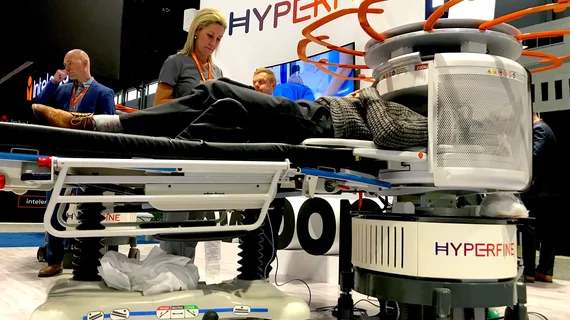MRI scanner OEMs will soon face increased pressure to differentiate machines in their R&D pipelines with superconducting magnets, open designs, AI integrations and—maybe most challenging—potential for portability.
These are among the gathering global trends newly discerned by Frost & Sullivan. The international business consultancy offered the observations Dec. 19 while announcing the availability of current market research.
Other key drivers of MRI change to look for between 2023 and 2027 include growing demands for faster scans and automated interpretation aids, the firm suggests.
Meanwhile the aging but longevity-minded Baby Boomer generation is propelling MRI traffic while governments around the world move to “provide free or low-cost diagnostic facilities and infrastructure to citizens,” Frost & Sullivan states in a news release promoting a report based on the research.
“Companies that offer portable imaging systems [are] addressing the market need for decentralized care delivery and challenging the established market participants that offer stationary MRI systems and compelling them to rethink their competitive strategy,” adds Frost & Sullivan healthcare analyst Ashish Kaul. “Further, new AI-based image analysis software that enhances MR image quality and supports clinical decision-making is making the market even more competitive for technology developers.”
At the same time, marketers of MRI systems will face numerous headwinds over the next one to six years, the firm forecasts. Among the most formidable of these:
- MRI systems are expensive, ranging from $150,000 to several million dollars. The high investment involved in purchasing, installing, and maintaining MRI devices may make them unaffordable for small healthcare facilities or developing markets, such as Nepal and Bangladesh, thus lowering their adoption.
- Low-cost, refurbished MRI systems are available, which may inhibit the uptake of new MRI devices that have advanced technological features.
- The number of healthcare workers who can properly operate MRI machines and perform appropriate imaging is inadequate, which is a roadblock to the uptake of innovative MRI devices in the market. The integration of innovative features in MRI devices requires technicians to learn new operations to perform procedures accurately.
To order the full report or download a free preview, click here.

